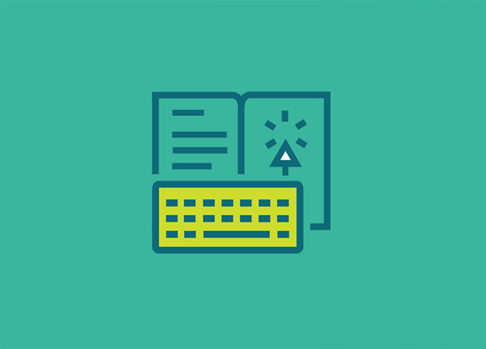Making your college decision
Choosing the right college takes a lot of thought. It isn’t just the cost but also the distance from home, your major and program options, and the type of environment (school size, class sizes, city style) you want to experience while studying.
While you're prioritizing your perfect college or career training wish list, use our College Comparison Chart to start considering what matters to you while in school.
Compare Your Options
Start by comparing each school’s total cost of attendance (Line 33 in our college comparison tool). If you’ve filled out the entire sheet, row 64 should display the estimated amount your family is expected to pay for each school. Now that you have the numbers, ask yourself these questions:
- Is there a school that offers the best price?
- Does the cost and what that school offers match up to your wish list?
- How much is the difference between your favorite school and the school that offers the best price?
- How long is each financial aid offer valid? One semester or one year?
Two other important questions to consider are which schools are offering you student loans as part of the package, and how much are the loans going to cost you? Since student loans need to be repaid, preparing for those upcoming monthly payments should be on your mind.
Loans should always be the last option to cover your education costs. And if paying out of pocket is your last option for covering those final costs, you're probably going to need a student loan. VSAC’s free My Education Loans guide offers education to students and families so they know their responsibilities when taking out a loan.

Some Things to Consider when Choosing a College
Keep in mind that financial aid packages will probably change yearly. Sometimes that’s a good thing, especially if you’re getting good grades and creating new opportunities to receive additional scholarships and grants. Other times, even with good grades and new connections, you may still need a loan. Part of the education experience is opening new doors, so that as you invest more time into college and career training, you’ll need to borrow less down the road.
If you’re ever uncertain about the length of your student aid offers or want to know the requirements for eligibility once you're enrolled, call the financial aid office for more details.
Additional Considerations:
- Most financial aid is for only 1 year, so filing your FAFSA yearly is necessary and important. Since federal aid changes yearly, filing a FAFSA yearly can open more opportunities for free aid that reduces your overall cost of education.
- If you’re offered a scholarship, find out if it’s only for 1 year or if it automatically renews each year you’re enrolled.
- Changes in your family’s financial situation can also affect your cost of attendance. If your family income is reduced the next school year or you fall under new financial hardships or obligations, you can appeal your financial aid and possibly receive more aid. Likewise, if your family income increases, you may see a decrease in the amount you receive in grants.
- Build in a 3% tuition hike each year you plan to attend.
Also remember it’s never too late to open a VT529 college savings plan to decrease the amount of money you’ll need to borrow from a student loan.

Still Can't Decide? Talk to People You Trust
Although choosing the best school is your decision to make, you don’t have to decide which college is right for you on your own.
- Discuss your options with people you trust: Talk about your choices with your support team (parents, teachers, family, school counselor) to see if they have any advice.
- Talk to those who’ve gone before you: Contact the colleges’ admissions offices and ask if there are alumni in your area who can meet or talk with you over the phone to answer any questions. You can also join the school’s social media page or visit a college review website like Niche to find out what students have to say about each school.
- Take a campus tour: Planning a trip to visit and get a feel for a school’s energy and the campus environment can also make you more confident in your choice.
- Listen to your instincts: There may not be a perfect school fit, but a good fit and the right choice will look different for you compared to friends. After you’ve compared the numbers, made the right phone calls, and spoken to friends and family, listen to your gut.
- Remember: You can always transfer to another school if you no longer feel like your school is a good fit.

Making Your College Decision Official
Once you’ve made your decision, you’ll need to:
- Send your commitment to your college of choice. Be sure to send the following by the school’s deadline (around May 1 for most colleges):
- Your acceptance of their offer
- The required deposit
- A separate acceptance letter for financial aid (if required)
- Any additional forms or required items (be sure to fill out requested paperwork completely)
- Notify the colleges you won’t be attending. It isn't required, but it will allow the school to offer your spot to another student who may be on the waiting list.
- Begin researching loan options. Tuition bills are typically available in July. Your school will handle the financial aid they're offering and will provide instructions for borrowing federal Direct loans.
If you need additional funding after accepting the maximum amount in federal student loans, then it may be time to consider private loans. But don't make loan decisions until you learn about education loan basics.
What's left?
Congratulations! In the past year, you've navigated your way through a very difficult process, and you're now looking forward to a new adventure. There are just a few things to remember on the home stretch:
- Keep up your grades. Your college will see your final high school transcripts, so it’s important to keep doing well through graduation. This is especially important if you have been granted a scholarship with specific grade requirements.
- You’ve got mail. Due to federal privacy rules, college info will come to you, not to your parents. Sign in to your college e-mail account and get in the habit of reading all e-mails.
- Attend orientation. Most colleges offer day- or even week-long programs. Sign up early to get the date or program you want.
- Sign up for work–study if it was included in your financial aid offer (the best jobs go first).




